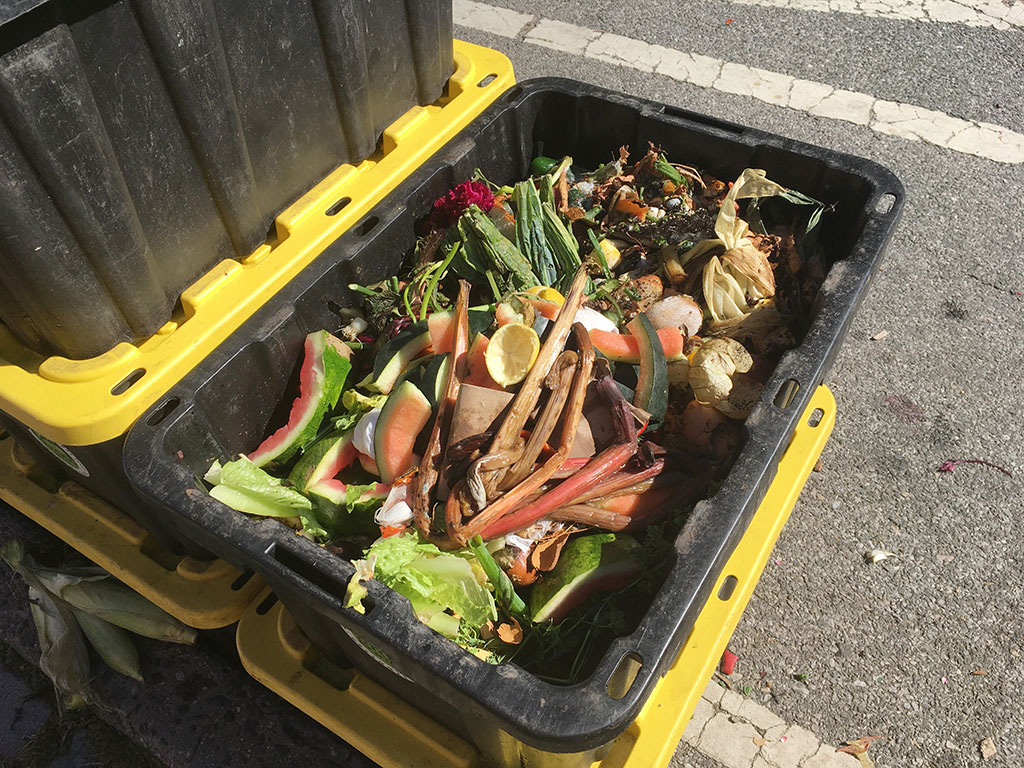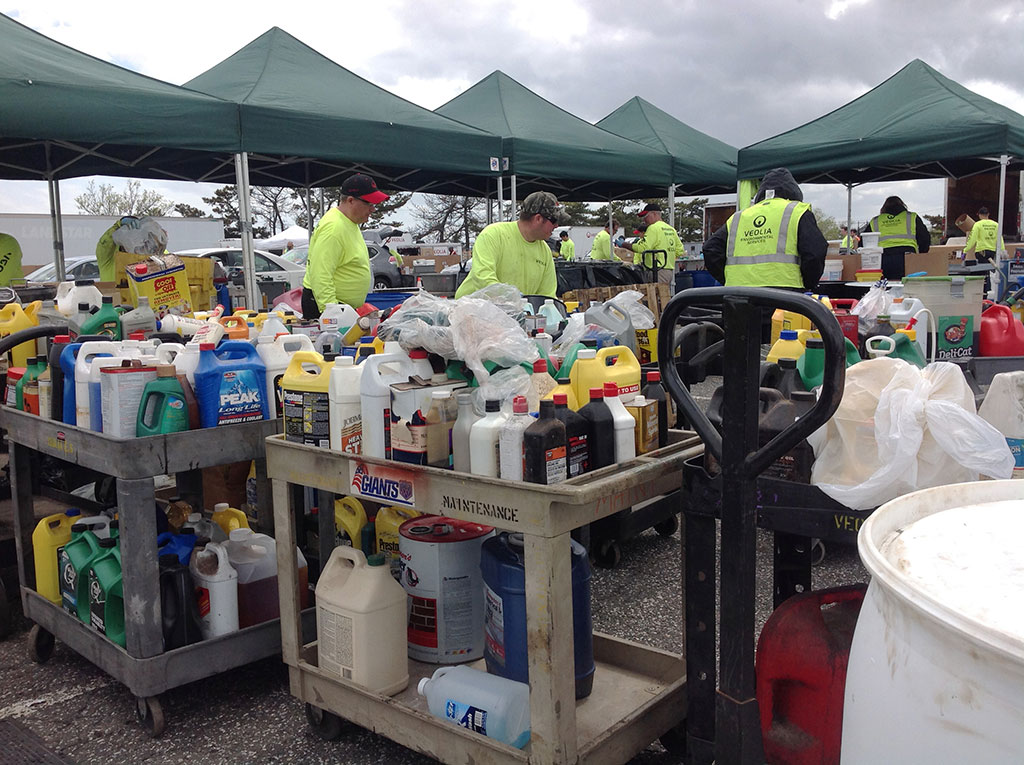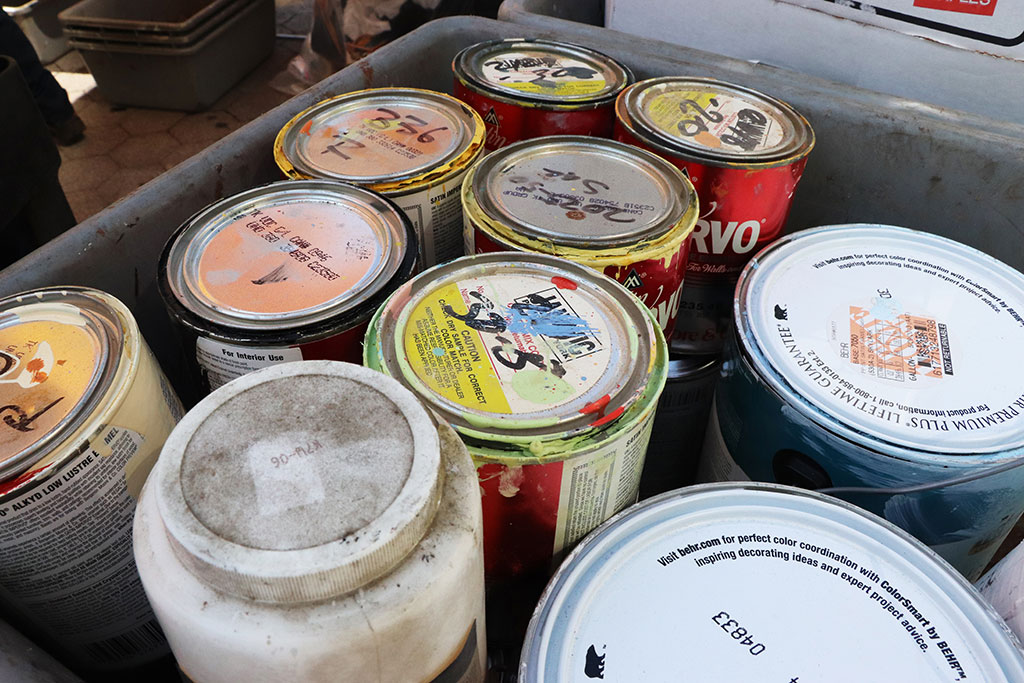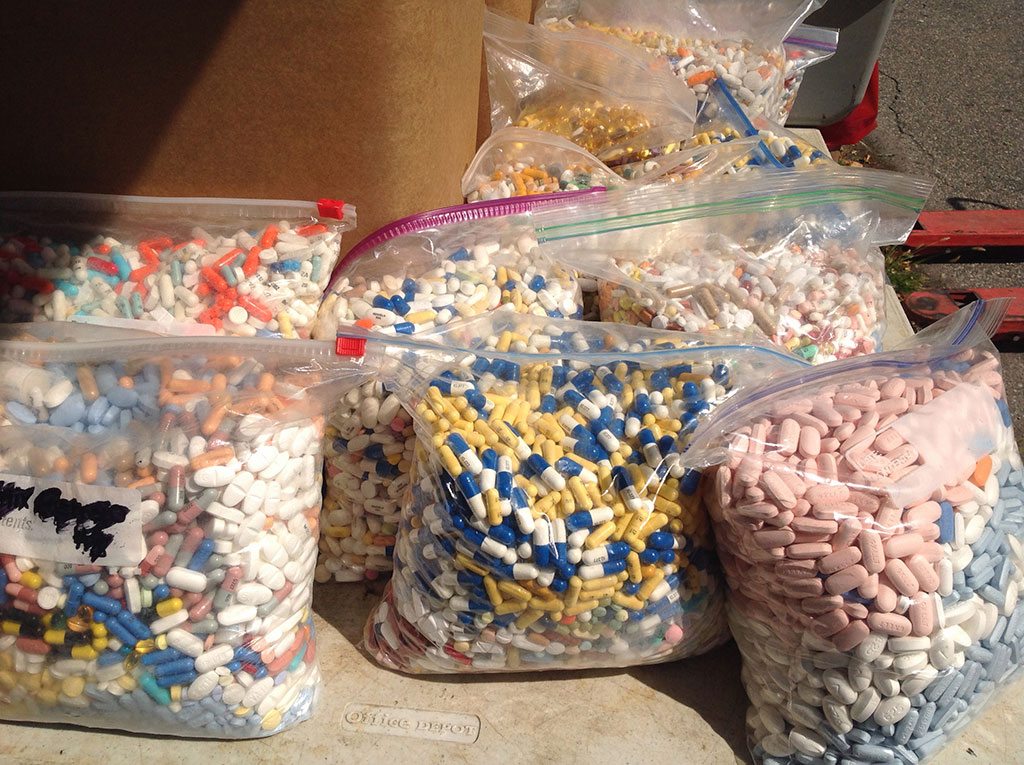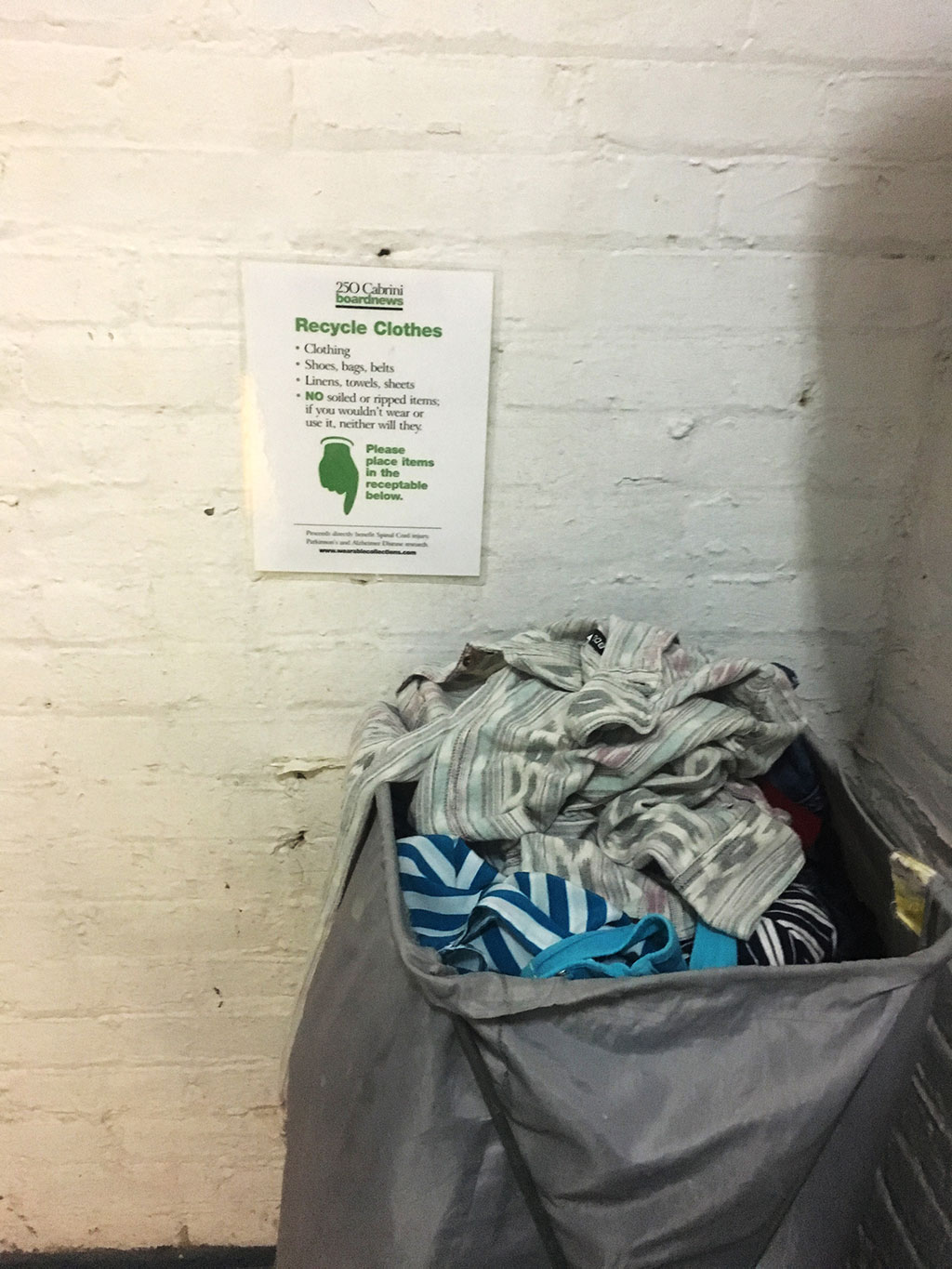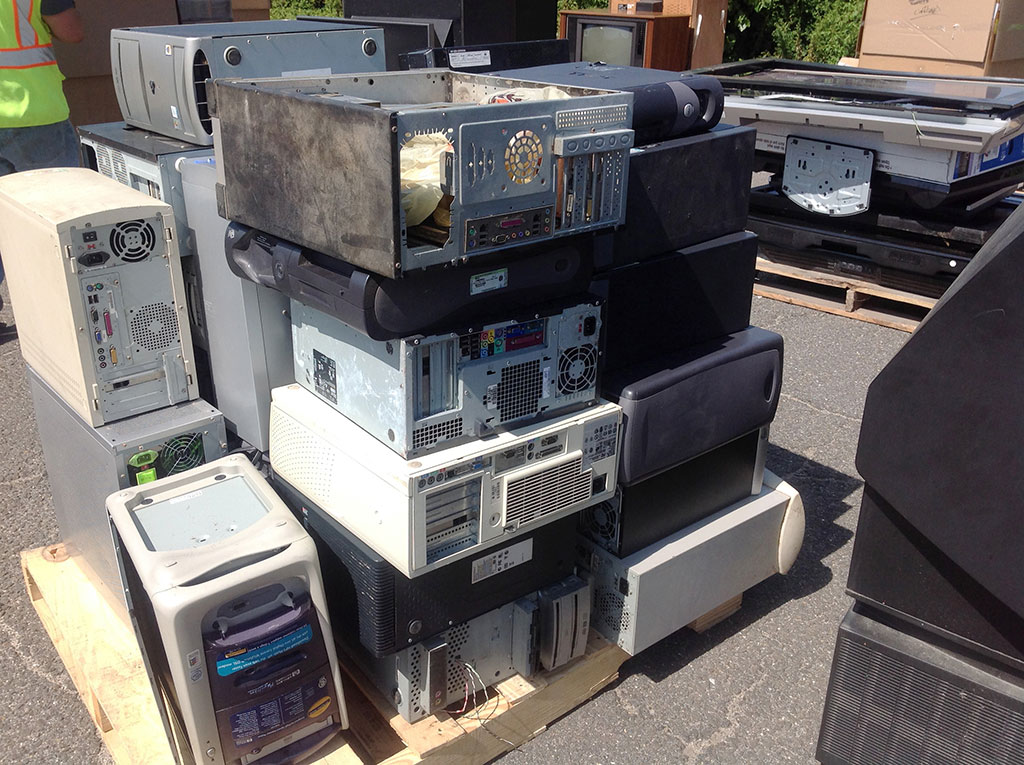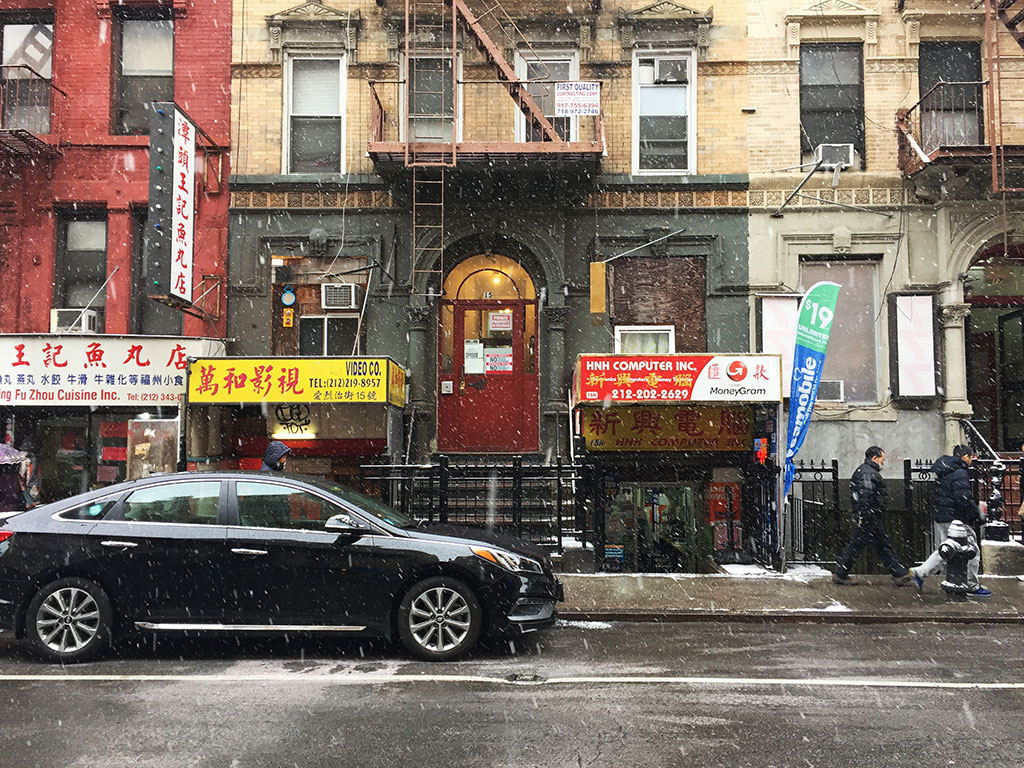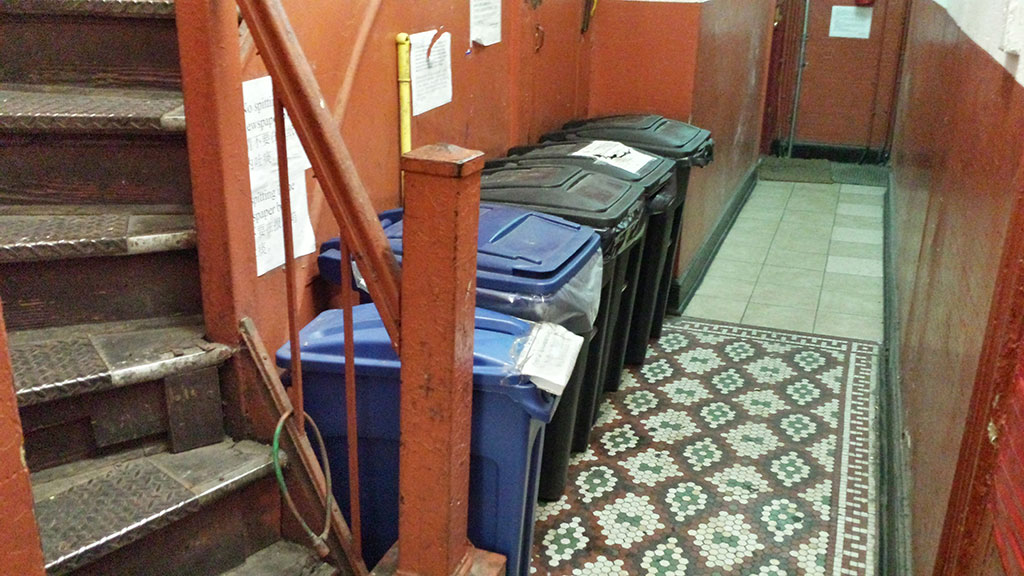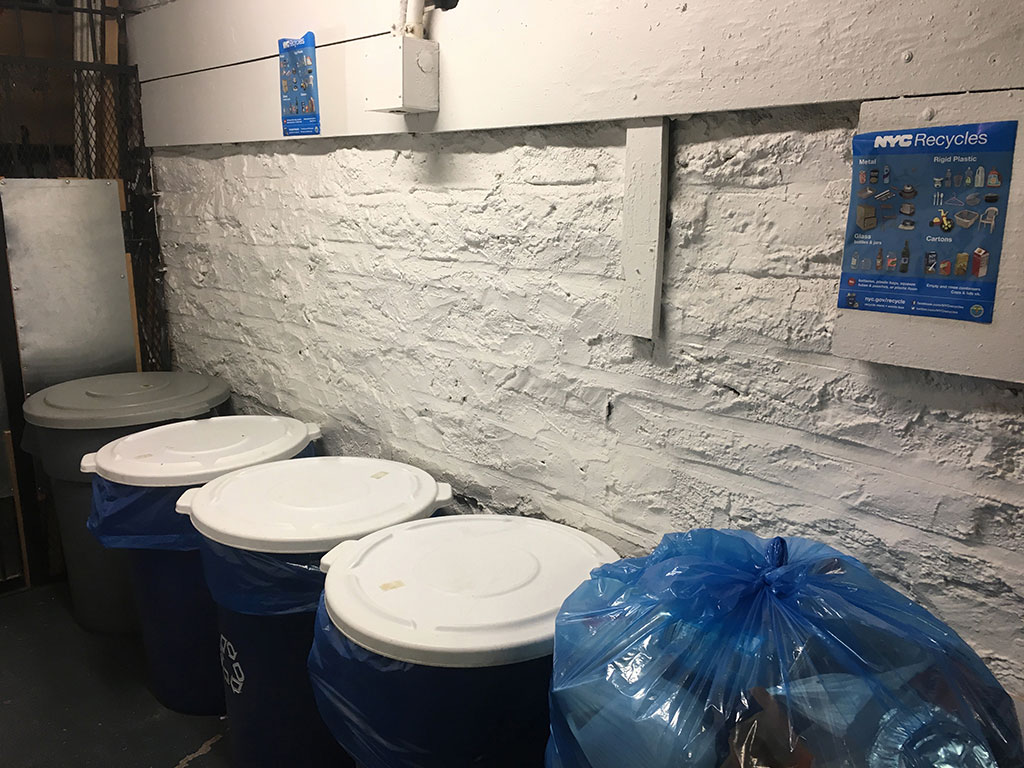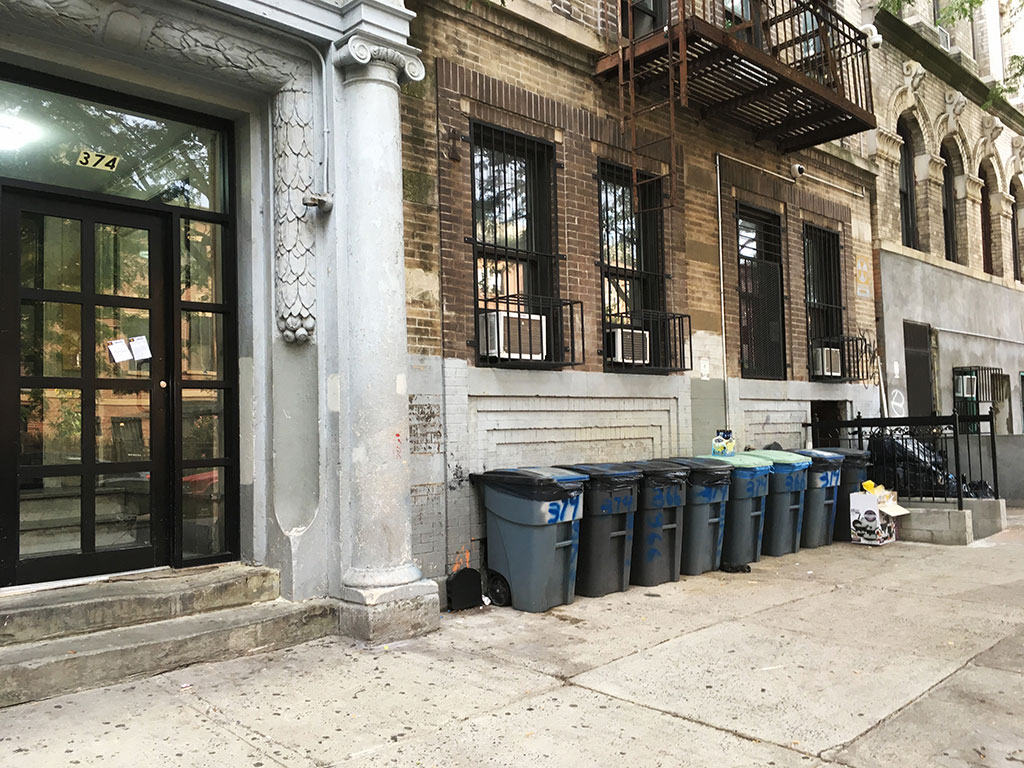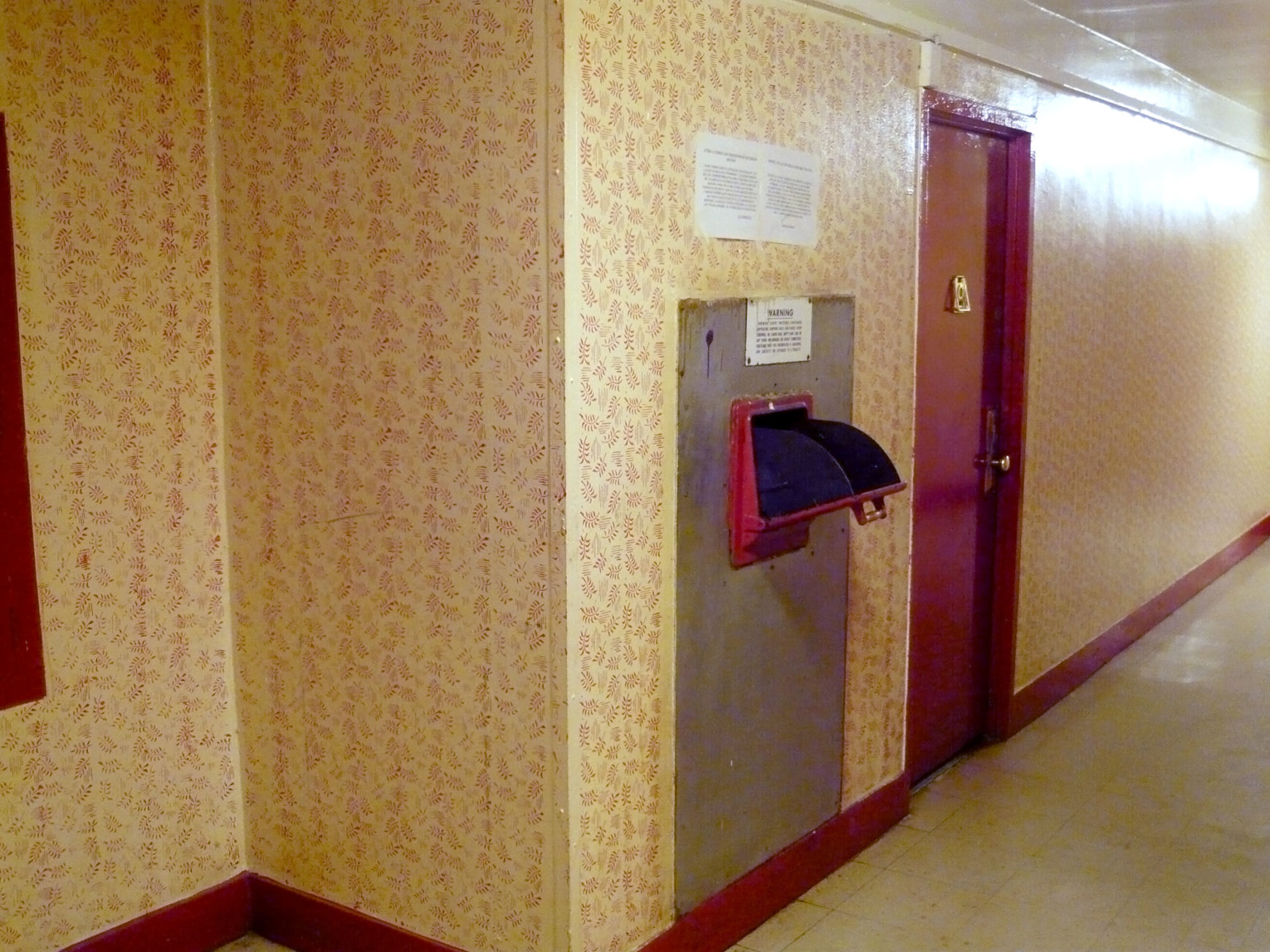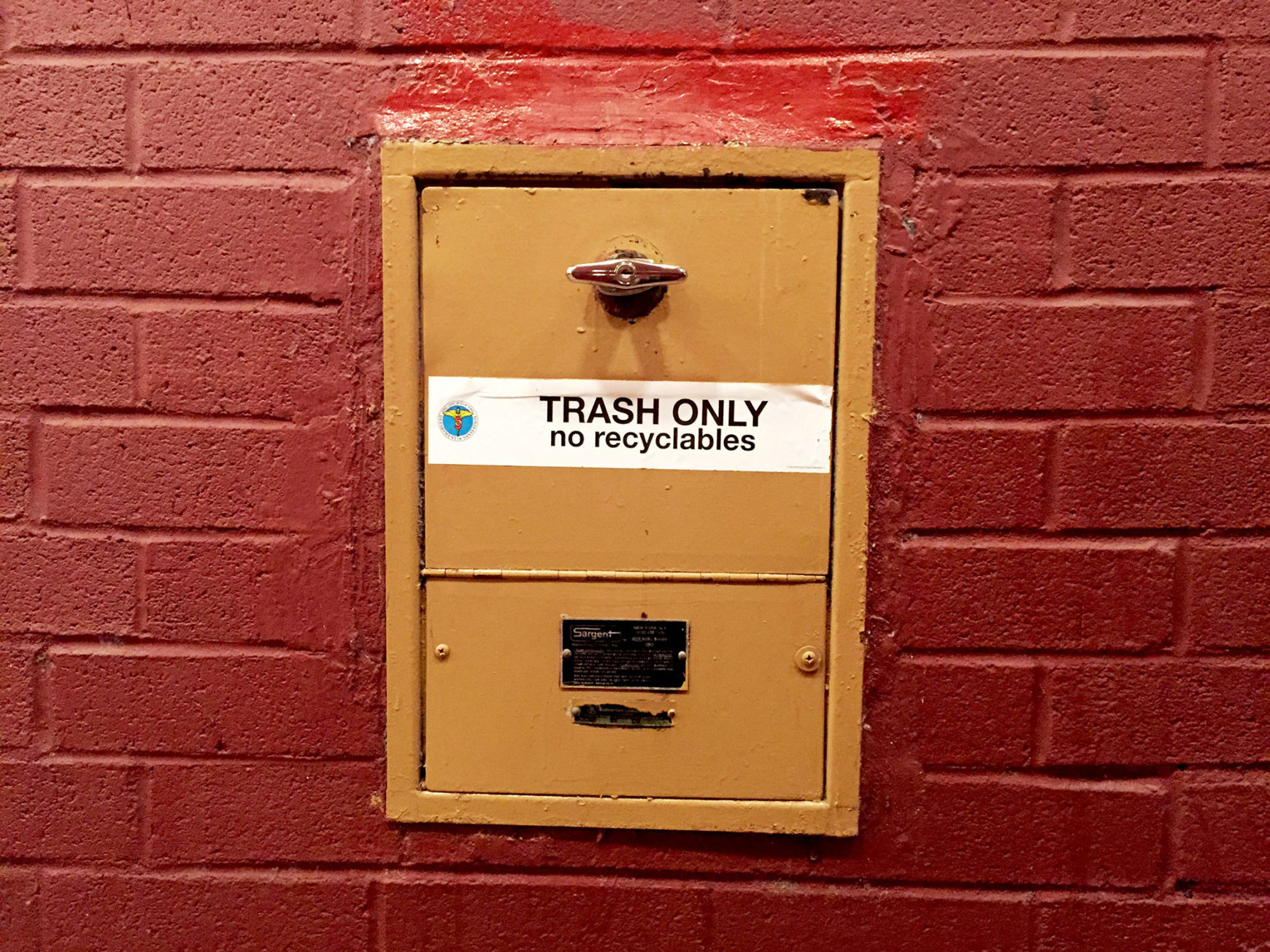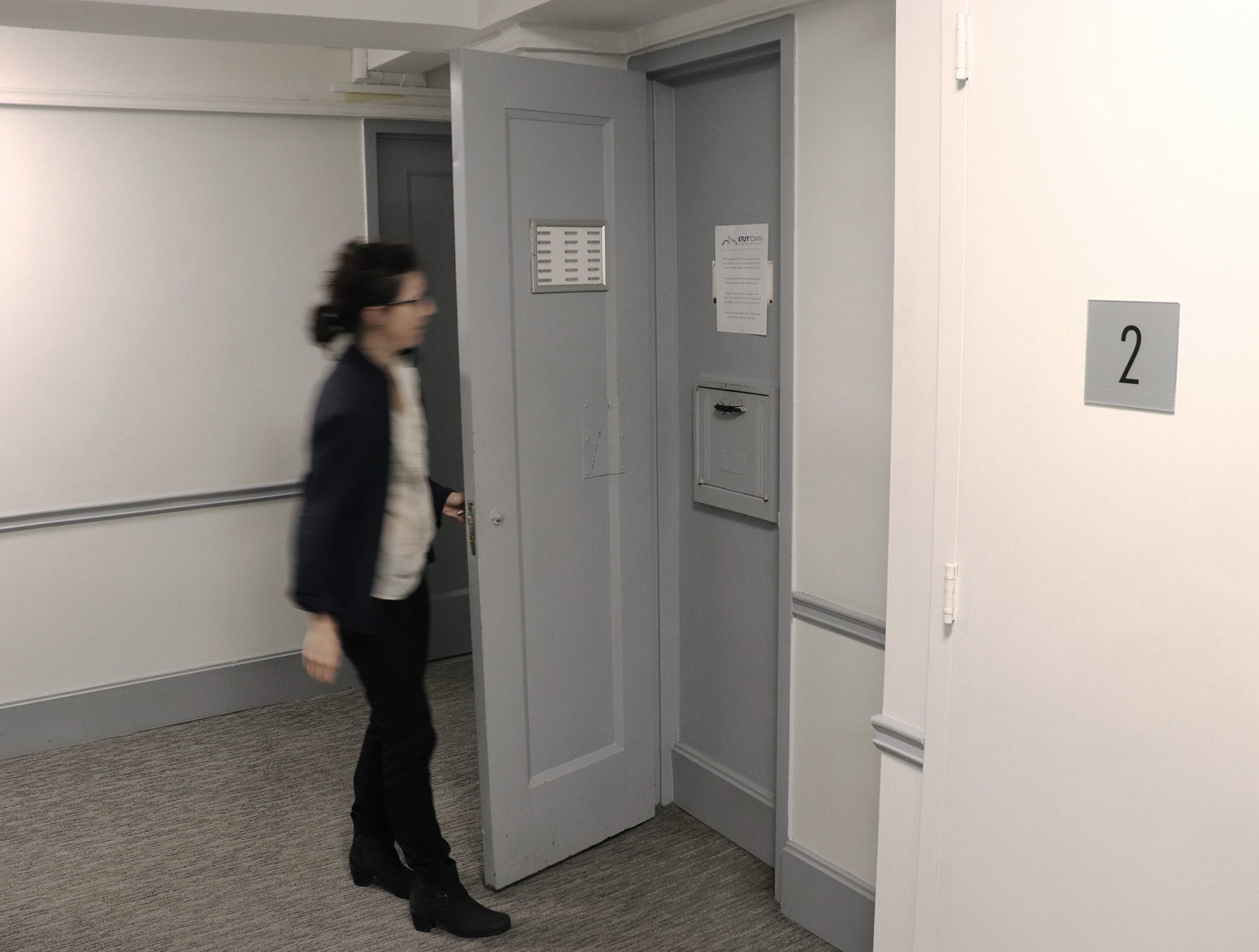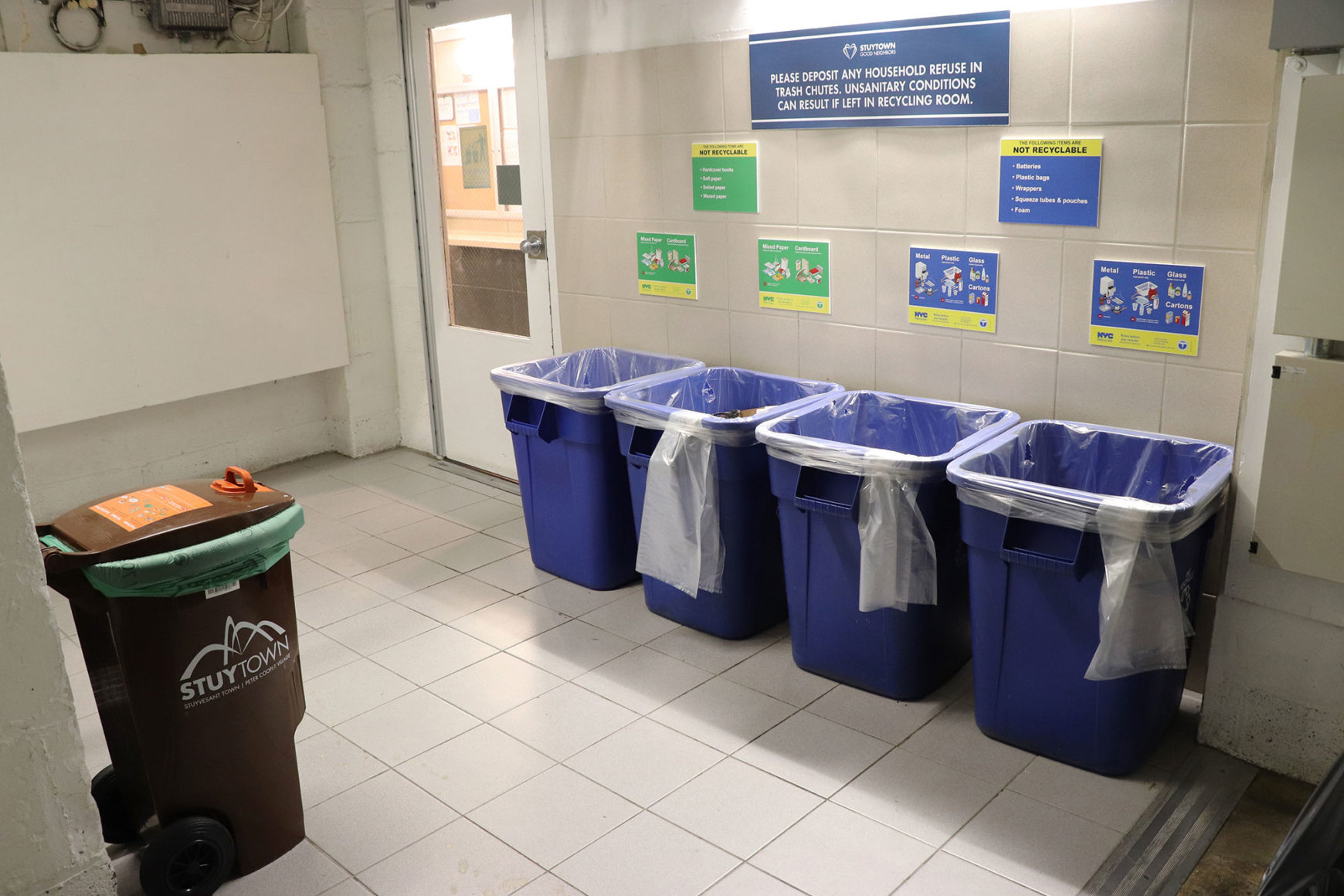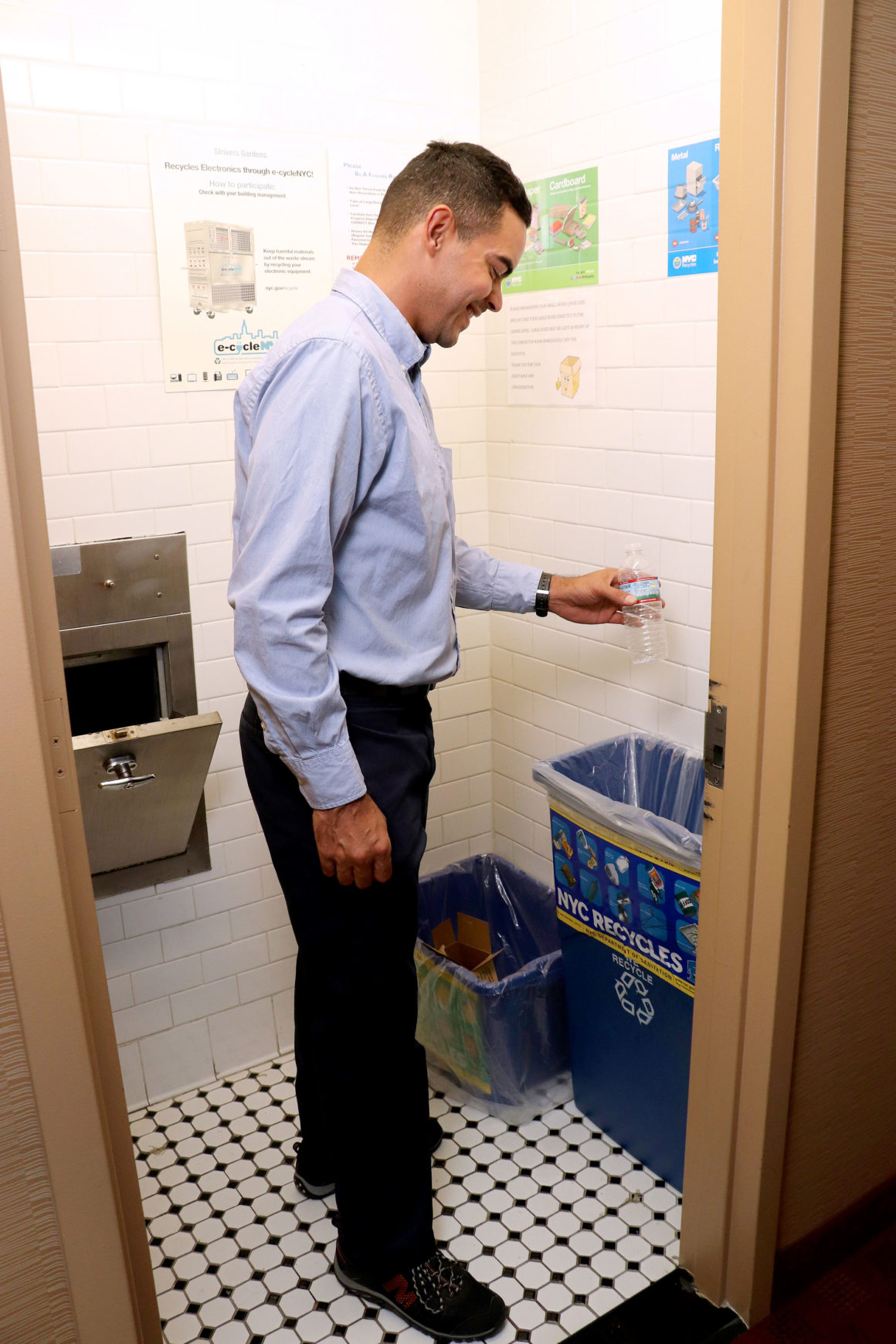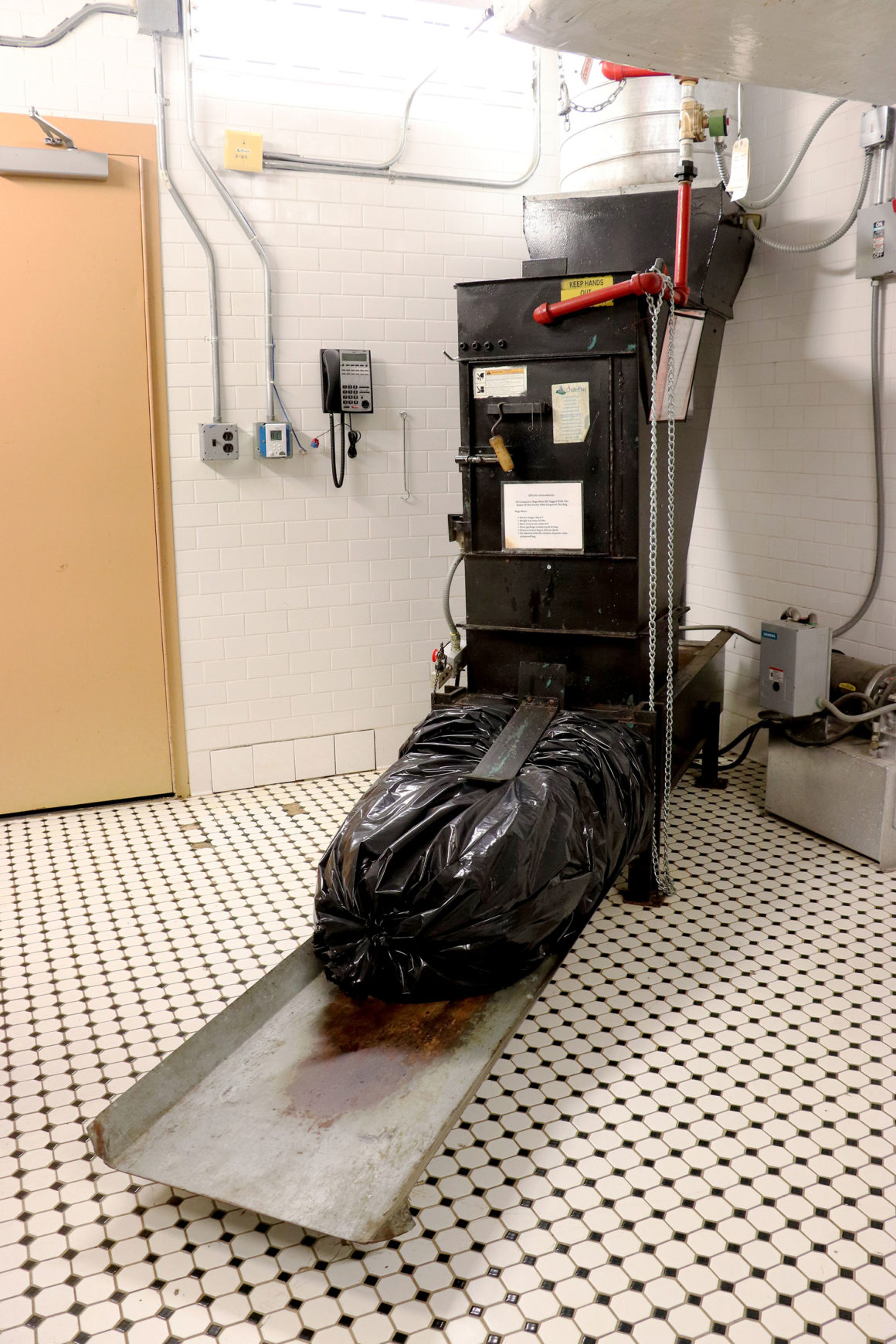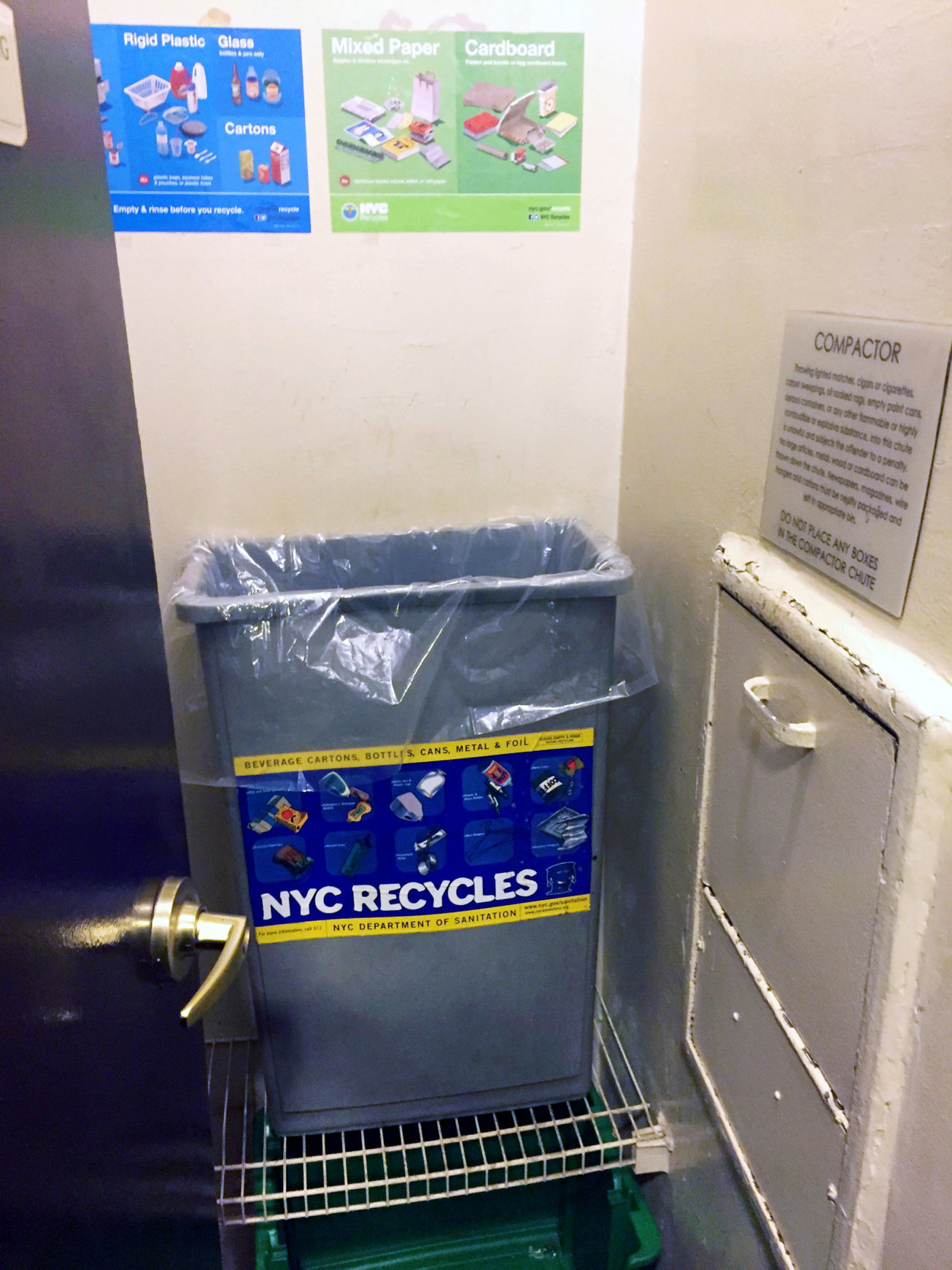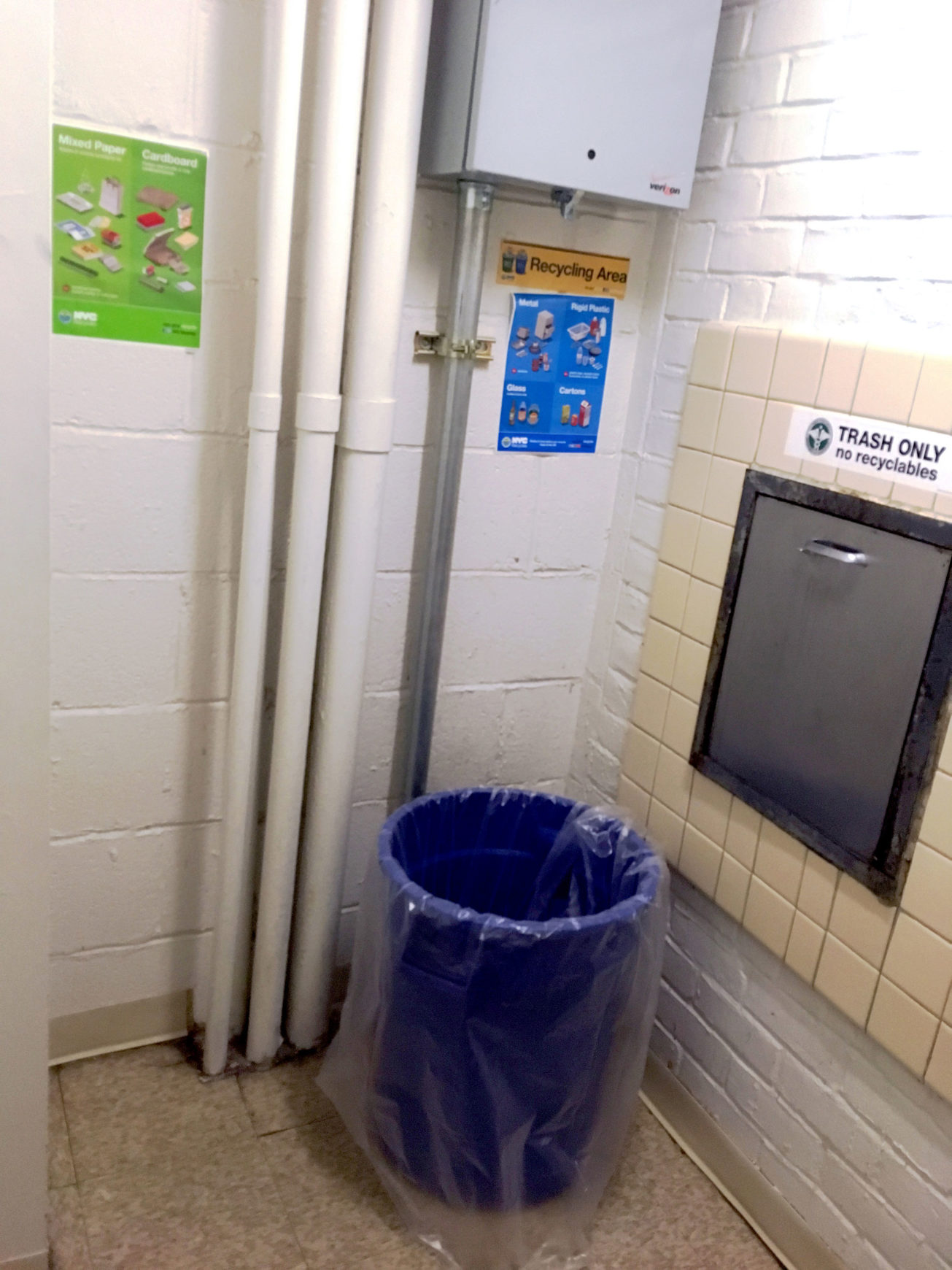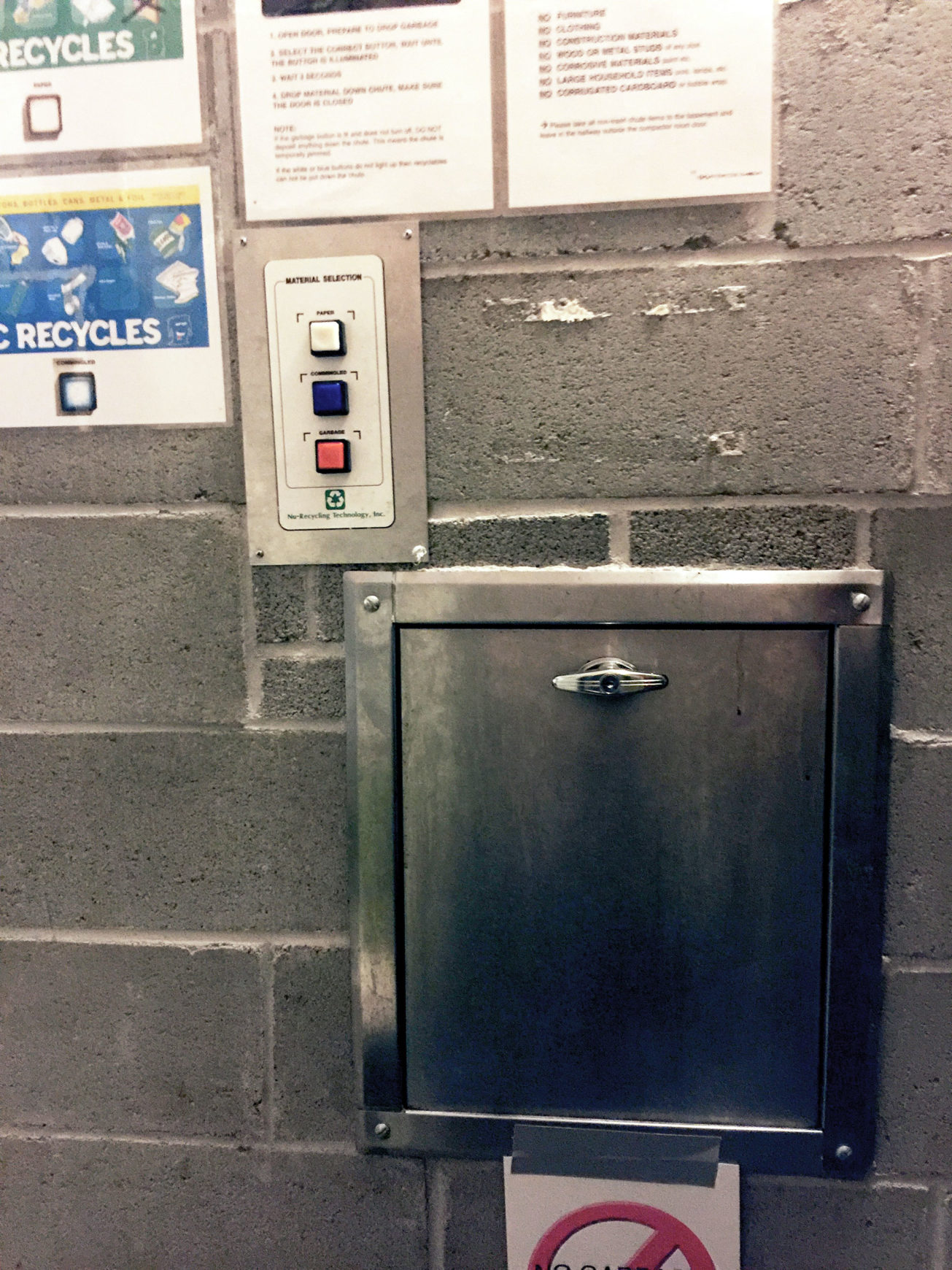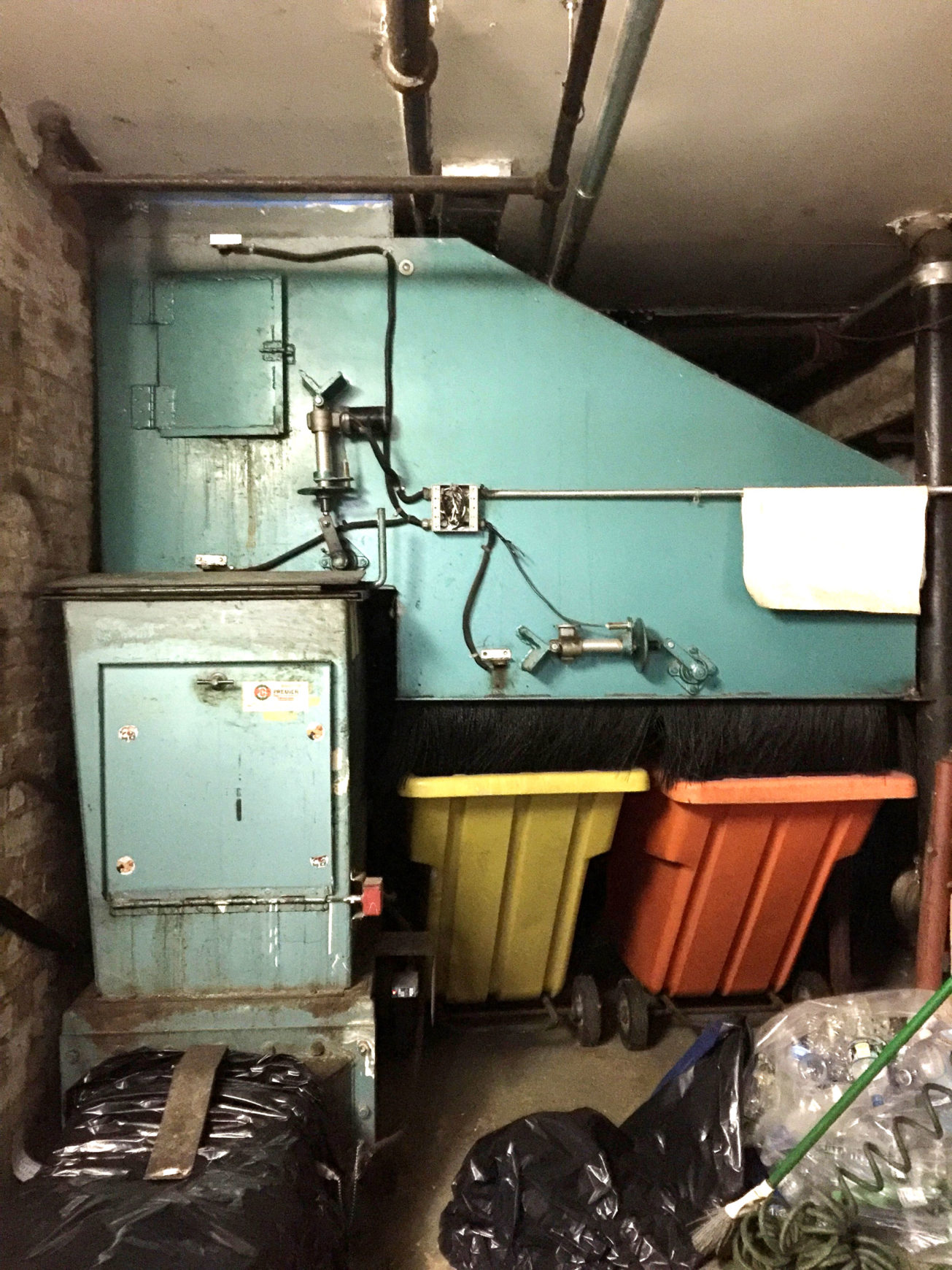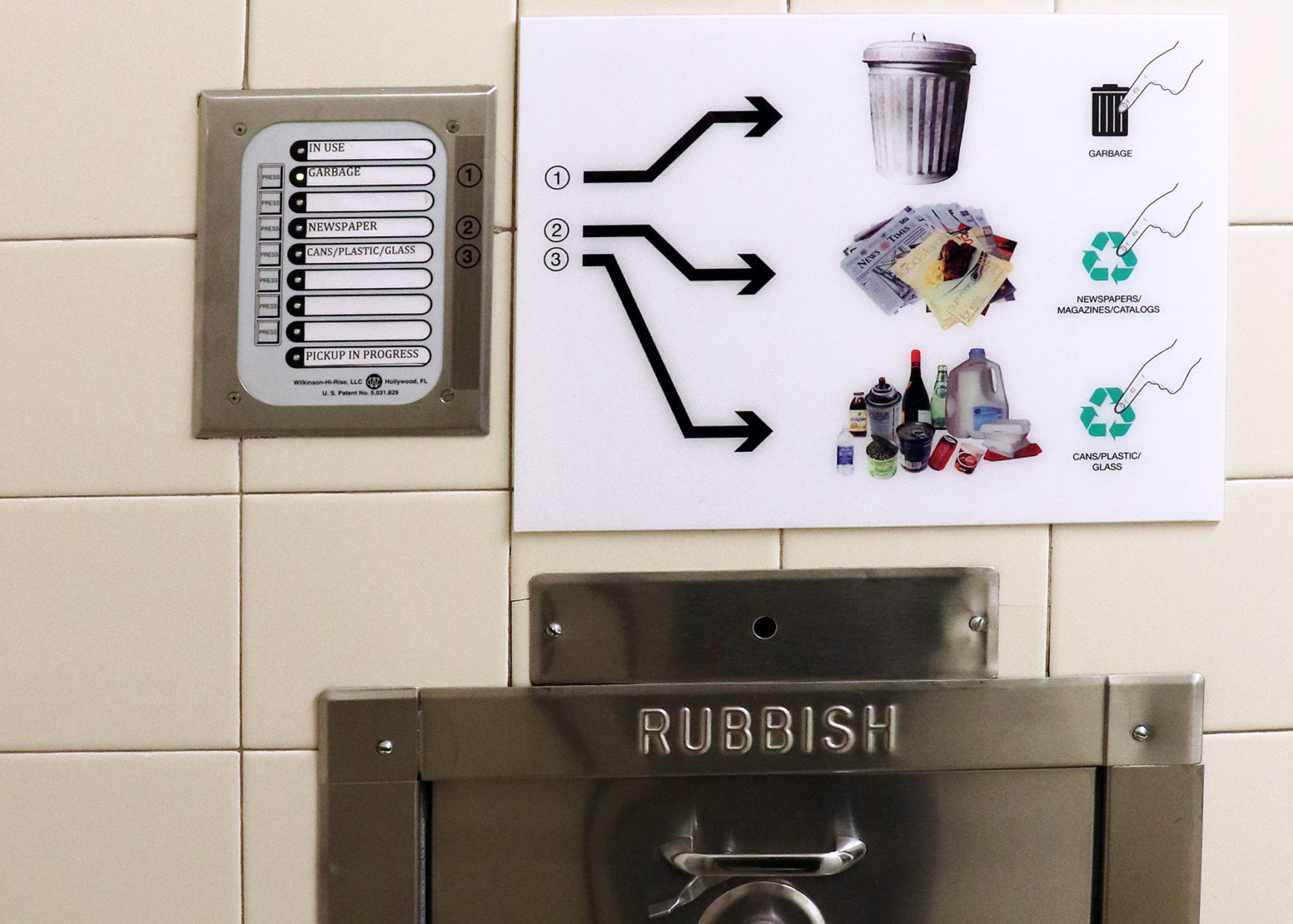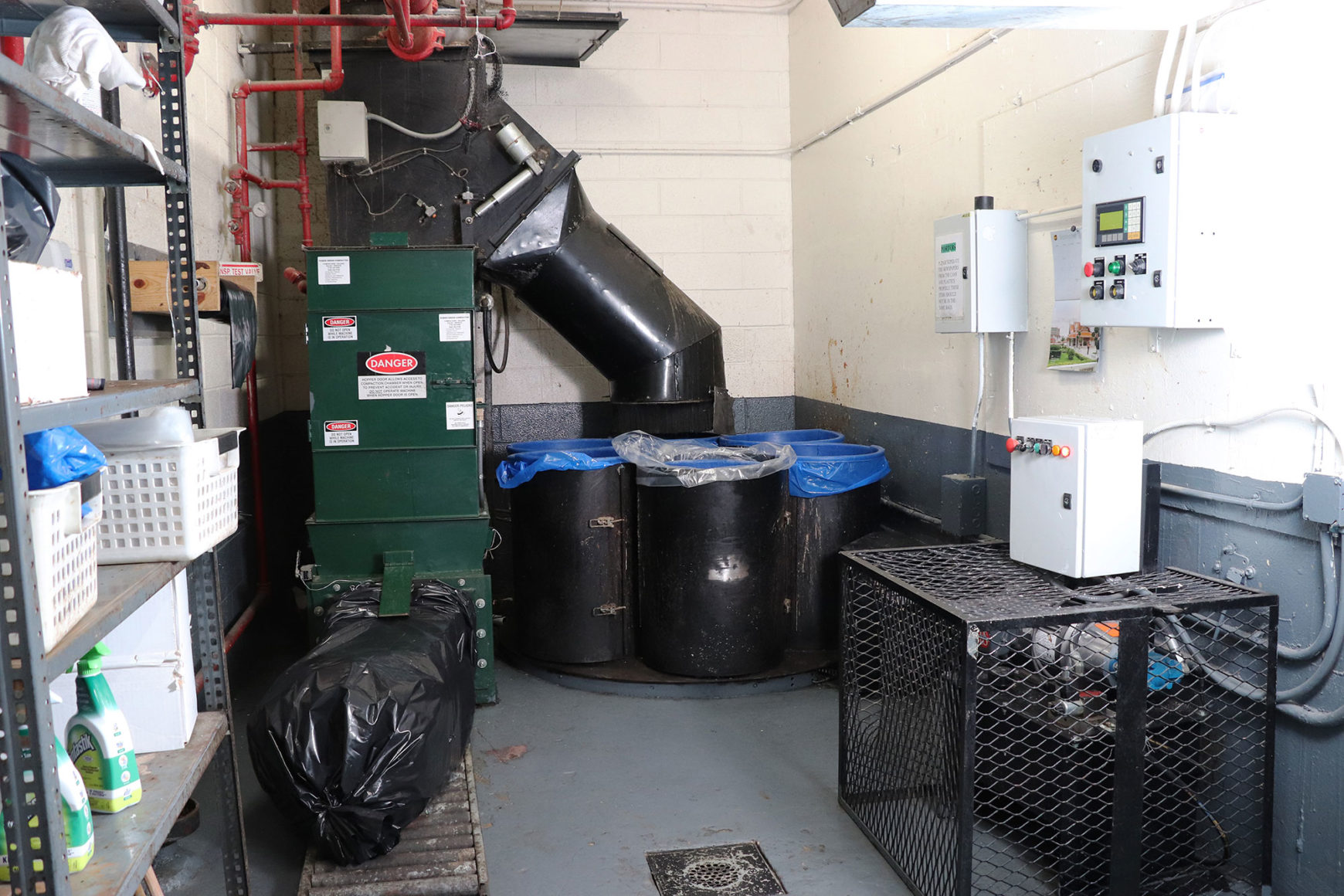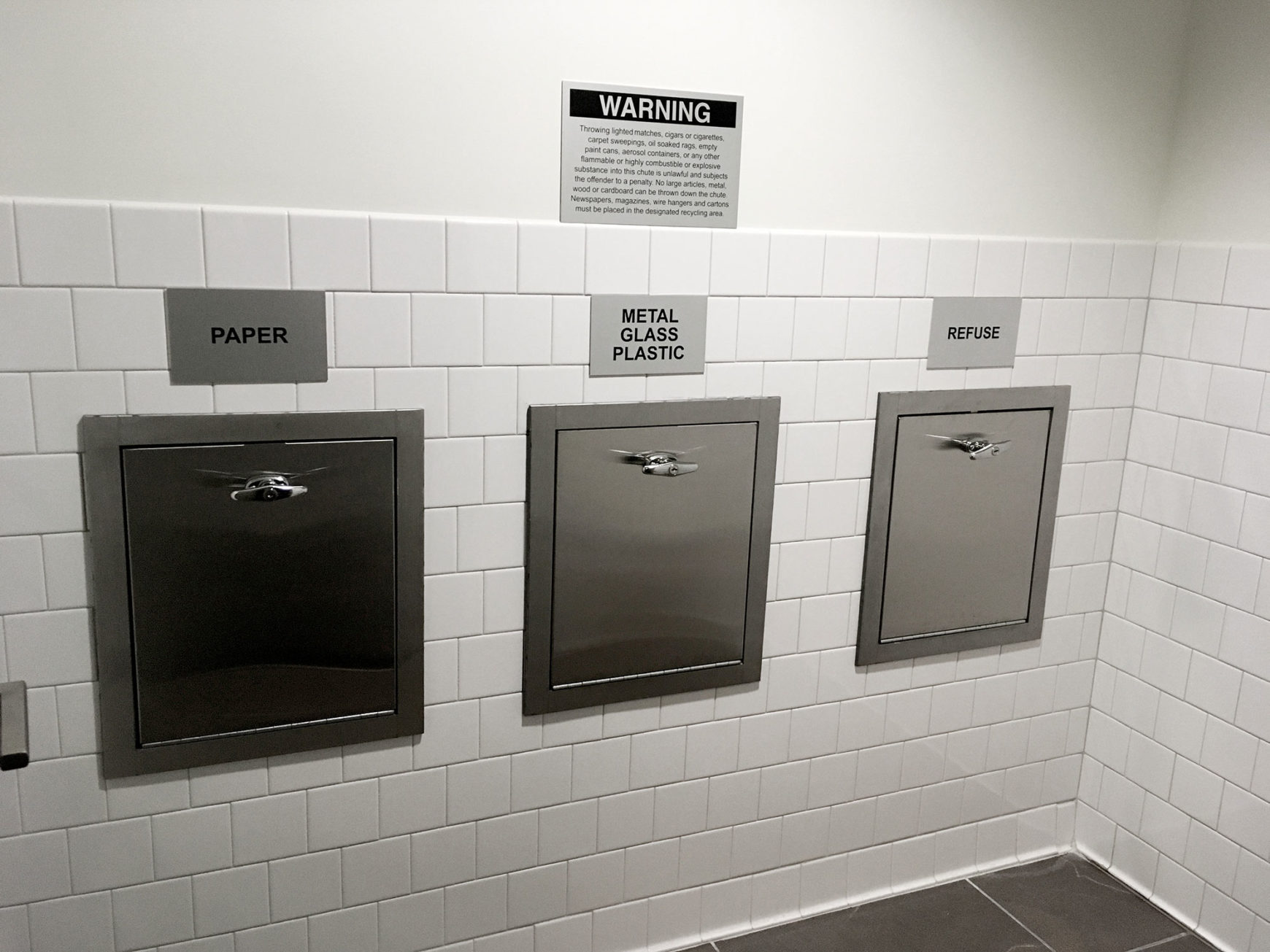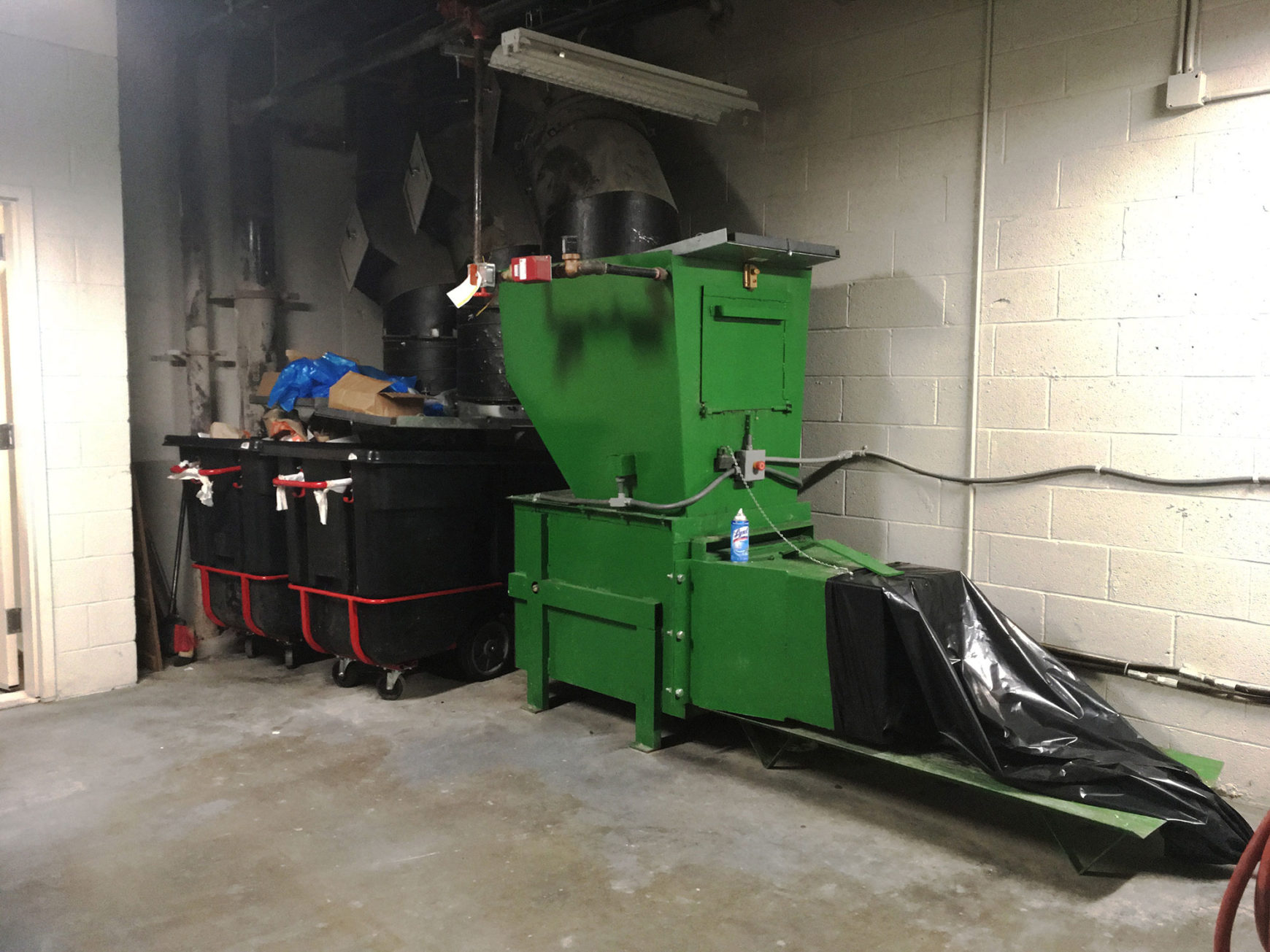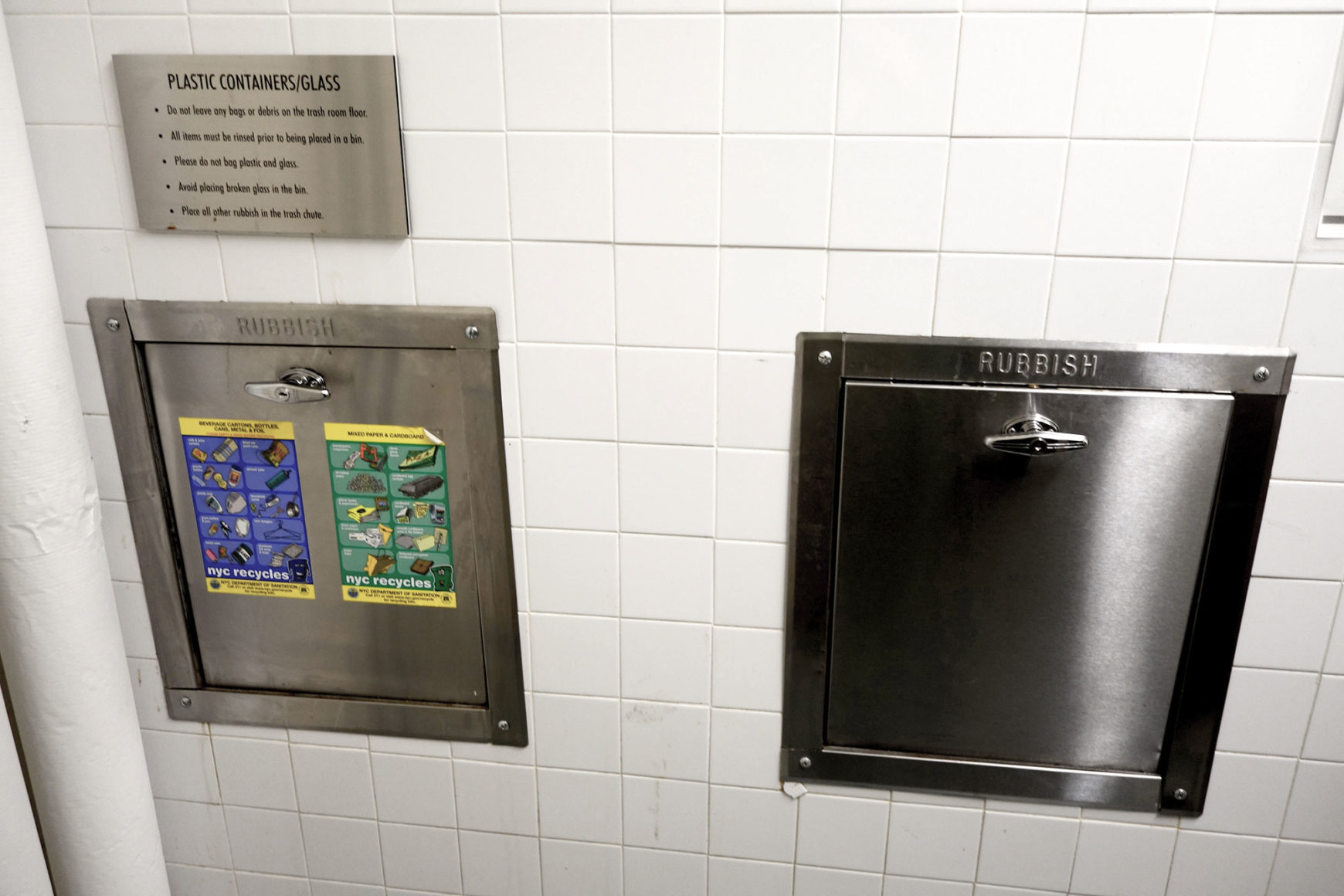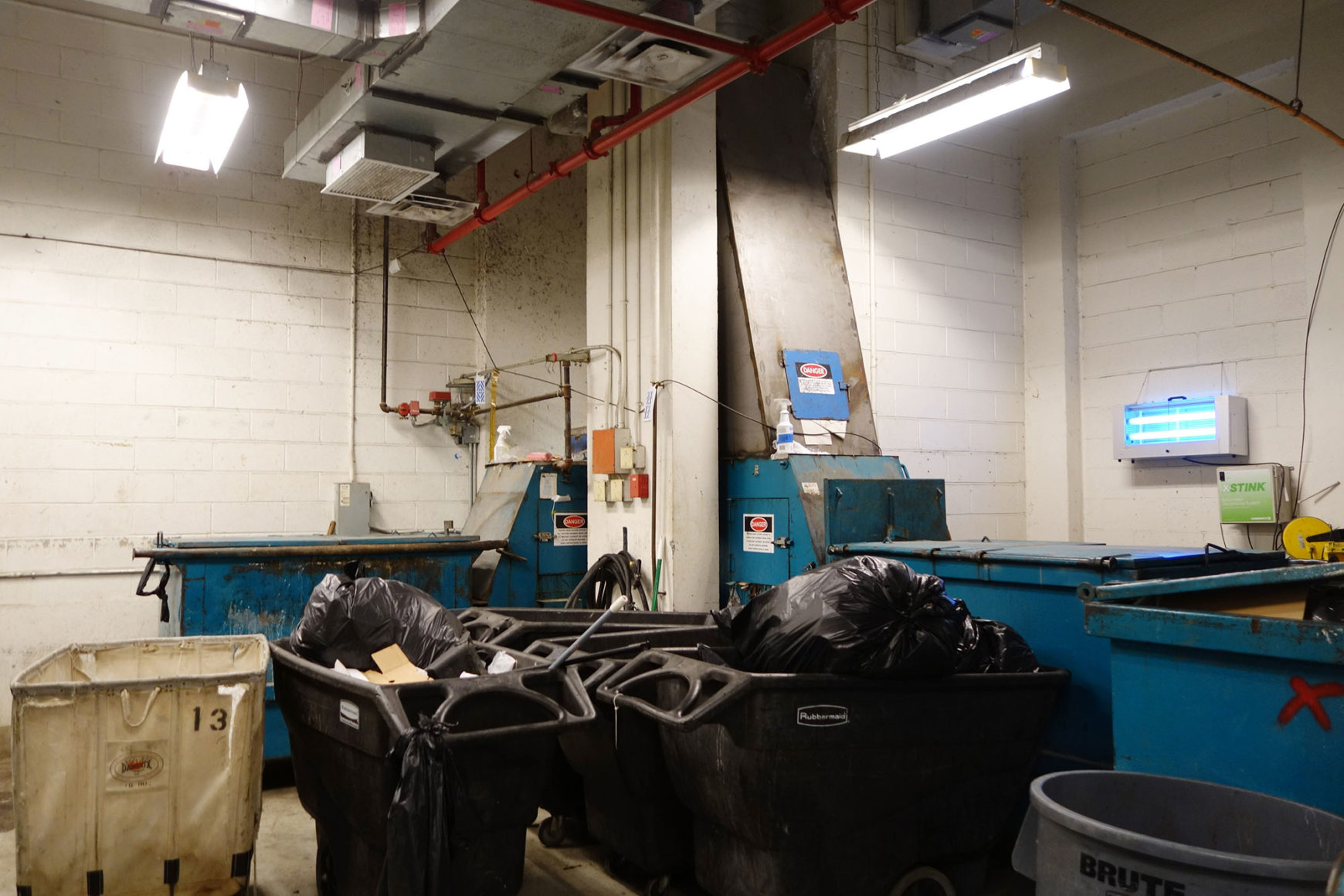Residential Waste Stream
In 2016, DSNY collected an average of 12,550 tons of waste per day. Of this, 18.9% was diverted from disposal in landfills or incinerators.
The piechart shows the composition of the waste that DSNY collects from residences and institutions. Reaching zero waste requires the following complementary approaches:
- Reducing waste generation
- Increasing capture rates for all diverted streams
- Diverting more of the waste stream through new diversion streams such as organics and textiles
DSNY is developing policies for these approaches, and the design and layout of our buildings needs to accommodate them.
OneNYC Initiatives
Reducing Waste Generation and Increasing Capture Rates Through Save as You Throw
From 2005 to 2016, the total volume of trash collected by DSNY was reduced by 11%, but the pace of reduction must increase dramatically to meet the 2030 OneNYC target of 90% reduc-tion from the 2005 baseline. One path to greater reduction could be a Save as You Throw (SAYT) initiative, which DSNY is currently considering. SAYT financially rewards those who waste less and recycle more. OneNYC estimates that implementing the SAYT program could reduce refuse generation by as much as 30%. Whether buildings are designed to pass this financial incentive on to the individual household will be critical to the success of a SAYT program.

DSNY Waste Stream Composition. Data is taken from DSNY 2013 Waste Characterization Study.
Increasing Capture Rates through Single-Stream Recycling
Capture rates for traditional recycling streams (paper, cardboard and metal, glass and plastic [MGP]) are around 50%, so there is much improvement to be made. Collecting these streams together—in what is called a single stream—may decrease the value of some waste streams, and separation is dependent on the sorting technology at a materials recovery facility. Other large U.S. cities that have moved to single-stream recycling have seen improvements in capturing recycling streams and reducing mileage on collection trucks. Starting in 2020, DSNY plans to collect single-stream recycling, which will affect waste management within buildings.
Additional Diverted Materials: Organics, Textiles and E-waste
Organic waste—food scraps, food-soiled paper and yard waste—composes almost one-third of the waste DSNY collects; when handled properly, it’s a valuable resource. NYC has the largest curbside organic program in the country, collecting organics curbside in certain neighborhoods as well as from enrolled buildings and drop-off sites. By 2018, all buildings will either have curbside organic pickup or convenient access to organics drop-off. In time, this program will be mandatory, so buildings need to plan for organic waste diversion.
DSNY’s refashionNYC program, a partnership with Housing Works, provides and services textile bins. Buildings of ten or more units can apply for these bins, which are often kept in laundry rooms or other communal areas; Housing Works empties them when they’re full.
Electronic waste (e-waste) is no longer permitted in the curbside waste stream because of its toxic components and to promote its special recycling. DSNY’s ecycleNYC program offers e-waste pickup to buildings of ten or more units and citywide drop-off events allow for convenient disposal of electronics and other hazardous household waste such as chemicals and household drugs. Provision for e-waste storage within buildings helps residents separate this toxic waste stream, which is the largest and fastest-growing component of hazardous waste sent to landfills.
- Organics and textiles at GreenMarket drop off and household hazardous waste and e-waste from DSNY SAFE event
The Changing Waste Stream
The rise in delivery services, which increased the use of cardboard, has dramatically altered residential waste-stream characterizations. Cardboard not sent down chutes must be broken down; its volume can be reduced with baling equipment. The material is also a valuable stream with a market for reuse, and designers need to plan for more of it.
Other waste-stream changes include a decrease in paper and an increase in nonrecyclable food-delivery cold packs and insulation.

Residential buildings are receiving an increasing volume of deliveries.
Seasonal Waste Trends
Waste is generated inconsistently throughout the year: Predictable cycles align with seasonal changes and holidays. DSNY makes provisions to collect special seasonal waste streams such as fall leaves and Christmas trees.

Christmas tree collection.
Rules and Standards
For sources see Building Rules & Standards in the Appendix.
DSNY Rules
See NYC Rules for Setout.
DSNY regulates collection of garbage for curbside setout.
- Buildings to have receptacles to contain waste generated in 72-hour period.
- Trash goes into heavy-duty opaque bags or bins with lids (less than 44 gal. and 60 lb. for handling ease).
- Recyclable materials must be placed in clear bags (13–55 gal.) or clearly marked containers (18–32 gal.), or cardboard and newspaper can be tied in bundles under 18 inches high.
- Recyclable-material storage areas of four-plus-unit buildings need signage.
- Organics go into a DSNY-supplied organics bin (16 or 22 gal.) or DSNY-approved bin (fewer than 35 gal.).
- Time for receptacle setout is either between 4 p.m. and 9 a.m. or 4 p.m. for daytime pickup.

Typical residential set out for DSNY collection
DSNY regulates collection of containerized garbage.
Roll-on/roll-off 20–35 cu yd containerized collection is possible and can be compacted for trash and paper, or in open containers for paper and cardboard, MGP, and bulk waste.
Currently 1–8 cu yd EZ-Paks are only picked up from buildings with an agreement in place.
DSNY regulates garbage separation streams.
- Recycling categories: Currently, the separation of MGP, paper and cardboard from trash is mandated; organics will likely be mandated in time.
- Some items, such as certain regulated electronic equipment and hazardous substances, cannot be placed in the trash or recycled. See DSNY.
- Some items—such as appliances, mattresses and seasonal yard waste—require special handling. See DSNY.
Building Code Requirements
BC 1213.1 General
- Mandates compliance with MDL #81 and HMC 27-2021 and requires a refuse or recycling storage rooms, the location of which shall be identified on construction documents. The storage space needs to be a minimum of 1.5 sf/dwelling unit or 350 sf (whichever is less). If there is a compactor, the amount is 1.0 sf/dwelling unit or 350 sf in addition to the equipment and circulation space for the compactor.
- If interior, the storage space needs to be 2-hour fire rated.
- If exterior, an additional 4 sf is needed and shouldn’t be on public right-of-way.
- If there is a chute with mechanical system to transport materials directly off-site (pneumatic or similar), then storage is not required.
BC 1213.2 Compactor
- States that a refuse compacting system shall be provided for I-1 or R-2 occupancy multiple dwellings 4 or more stories in height and containing 12 or more dwelling units and any R-1 occupancy multiple dwellings.
- Such system needs to be located within a refuse storage room constructed in accordance with BC 1213.1 or in a refuse chute termination room constructed in accordance with BC 707.13.4 (3-hour fire rated).
- The room shall have a concrete floor sloped to a floor drain and a hose connection.
BC 1213.3 Chute
- States that a multiple dwelling 5 or more stories in height and that contains more than 9 dwelling units shall be provided with a refuse chute, refuse chute access rooms, and refuse chute termination room constructed in accordance with Section 707.13.
- Provision needs to be made for recycling (5 sf) in the refuse chute access room, unless there is a chute for recycling or a chute that has system for separating recycling.
Multiple Dwelling Law
Section 81 states that proper receptacles for garbage need to be provided and garbage needs to be removed daily.
Housing Maintenance Code Requirements
Section 27-2021 states requirements for waste receptacles, storage rooms and collection of waste matter. These requirements are also mostly covered in DSNYRR and BC.
Zoning Resolution Requirements
Zoning Resolution (ZR) allows some deductions from floor area for provision for waste management:
- ZR 13-32 allows exemption of up to 300 sf for dumpster storage adjacent to loading dock in buildings over 100,000sf in the Manhattan Core (minimum dimensions 12’ x 25’).
- ZR 28-12 quality housing developments can deduct 12 sf per trash room.
ZR has some requirements for refuse storage provisions:
- ZR 26-16 requires a central refuse storage area within the zoning lot for residences in high-density R9 and R10 districts. Minimum area is 75 sf (for uncompressed garbage) or 50 sf (for compressed garbage) per 10,000 sf of lot area.
- ZR 28-12 Quality Housing buildings are to provide refuse storage at rate of 2.9 cu ft per dwelling unit. A refuse disposal room minimum 12 sf to be provided on each story with dwelling units.
LEED v4 Credits
LEED offers credits for materials and waste management including prerequisites for Storage and Collection of Recyclables, and Construction and Demolition Waste Management Planning. (See LEED Waste Management Credits in the Appendix.)
Enterprise Green Communities Criteria with NYC Overlay
Enterprise Green Communities Criteria is a nationwide green building criteria list designed for affordable multifamily housing. New York City’s Housing and Preservation Department (HPD), which requires that projects follow it, has an overlay which makes some of the credits mandatory. Credit 6.13 for Recycling Storage (mandatory per NYC overlay) requires separate bins for collection of trash and recycling for each dwelling unit and shared community rooms. For multi-family buildings, a permanent dedicated indoor area for collection and storage of recycling materials is required.

Converted chute with a compactor replacing the former incinerator.
Residential Typologies
Before the 1970s, many larger multifamily buildings had trash chutes emptying into cellar incinerators. Air-quality concerns led to the banning of these incinerators, and the chutes were then connected to compactors instead. Such converted chutes, typically smaller than later chutes, were often located directly in a corridor rather than in a small trash room. NYC housing stock ranges from one- to three-family homes with bins in the front yard to highly serviced doorman buildings with separate circulation and elevators for waste collection to high-rise residential towers with multiple chutes for different waste streams.

Although the building stock varies physically in many ways, sometimes including ground-floor commercial spaces, the management of residential waste within buildings can be categorized by six typologies. The method of collecting the waste is not directly related to the management within the building, and it is categorized independently as Truck Collection Typologies in Chapter 3.
Each residential typology is described separately and assessed in terms of:
- Space required: Space efficiency is desirable to building owners, especially on floors above grade.
- Labor required: Labor in moving waste adds costs for building owners.
- Convenience to resident: Most residents want convenience.
- Cost and maintenance: Some typologies require equipment, which adds capital costs and requires additional maintenance.
These four concerns are interrelated—and additional convenience to the resident will generally result in increased labor costs. Similarly, equipment such as chute sorters will reduce labor but increase capital costs and maintenance requirements.
Additional considerations relate to the best practice strategies in chapter 3, and the typologies are assessed in terms of how easily they can accommodate them:
- Volume reduction: Compaction leads to reduced volumes and area required for storage and setout of waste.
- Equal convenience disposal: This is the ease of adding organics collection with co-located bins.
- Save as You Throw (SAYT) rewards: Can they be easily passed back from building to resident to incentivize waste reduction and increased recycling?
Of the six building typologies, Typologies 1, 2 and 3 are not permitted by NYC Building Code for new buildings with more than five stories and nine units because of the requirement for a chute and chute access room. For a new building, the choice would be between Typologies 4, 5 and 6. This decision is a balance between the considerations listed above.
Typology 4, which provides equal convenience disposal of all waste streams including organics, is the best choice. It does require well-ventilated waste rooms and staff to service the bins daily.
Typology 5 and 6 are also options, but organics chutes are not common, especially in NYC where DSNY does not pick up from 1–2 cu yd containers. If organics come down a chute into a wheeled bin or turntable system, they have to be serviced frequently. Organics chutes also need more washdowns. (See Grand Millennium case study.) Private carter service could be chosen, with the organics chute emptying into a 2 cu yd container (a tighter connection requiring less frequent servicing).
Typology 1 is a good option, requiring a lower level of service without the issue of organics chutes; it is common internationally in multifamily residential buildings. A pilot building of this residential typology in NYC could provide valuable insight into whether a code change should be considered. (See Chapter 4.)
Typology 1: Central Location

In the simplest scenario, residents bring waste to a central waste area. The area may be interior (at grade level or in the cellar) or exterior (in front of the building within the property line, on the sidewalk or in a side yard).
Though not allowed by code for buildings over five stories and nine units in NYC, central at-grade waste rooms located directly off the lobby are very common internationally in multifamily buildings. (See Clichy-Batignolles case study.)
Advantages
- Space efficiency: Floor area not needed on every story
- Low labor for maintenance staff (however, if the central waste
area is not large enough, extra labor may be required to move waste to another storage space before setout)
Disadvantages
- Inconvenient for residents who can’t routinely carry waste out
- Alignment with best practice strategies
- Volume reduction: Typically used with wheeled bins and no compaction in existing NYC buildings, it can be used with compaction—for example, if disposal into waste inlets could direct waste into compactors below.
- Equal convenience disposal: This allows for co-location of trash and recycling and organics, if in a well-ventilated location.
- SAYT: The rewards could be bag-based per resident, with enforcement via camera possibly required.
Notes
- Disposing of waste in a publicly visible location may increase diversion. ← “When social norms are visible to everyone (e.g. using a recycling bin), Vining and Ebreo (1992) show that participation rates are higher.” Ankinée Kirakozian, “One Without the Other? Behavioural and Incentive Policies for Household Waste Management,” in Journal of Economic Surveys 30, 3 (2016): 542.
- Moving bins to the exterior can remove odors and pests from the interior but be detrimental to the quality of the sidewalk experience. Exterior bin enclosures also require capital costs and maintenance.
- Limited room for interior and exterior storage in Chinatown tenement
- Central storage in cellar and on street
Typology 2: Service Corridor

Typically found on the Upper West and East sides of Manhattan, these are large apartment buildings, often cooperatives, with doormen and staff who service the building through its separate service circulation. Residents generally place their waste in bins or bags, as well as bundled cardboard, directly outside the service door to their apartment.
Advantage
- High convenience
Disadvantages
- Requires separate service corridors.
- High labor, as waste is picked up from outside every apartment.
Notes
- Volume reduction: Typically there is no provision for compaction, though a central compactor could be used.
- Equal convenience disposal: There is co-location of trash and recycling, and it should be easy to add organics as waste is usually removed often.
- SAYT: The rewards could be bag or container based per resident; enforcement would be easy, as waste is collected door to door.

Waste left by residents outside of the apartment service door
Typology 3: Corridor Chute with Central Recycling

Typically found in larger apartment complexes or New York City Housing Authority (NYCHA) housing, this system often consists of a narrow chute that previously emptied into an incinerator. The chute door is in the egress corridor, or alongside the elevator, making it against code to add co-located bins for recycling or organics. Recycling is located in a central area.
Advantages
- Space efficient: Floor area is not needed on every story.
- Low labor: Waste streams are collected from only two locations.
Disadvantages
- Trash disposal is convenient for residents, but recycling disposal is not, prioritizing trash over recyclable streams.
Alignment with best practice strategies
- Volume reductions: Trash typically empties into a compactor.
- Equal convenience disposal: Co-location of trash and recycling is not possible; organics can typically be added beside the central recycling.
- SAYT: The rewards could be bag-based per resident, monitored with a camera facing the chute door, or savings from a container based system could be passed on to residents through use of a digital key to open the chute door. ← The digital key may calculate times the chute is used rather than exact volume.
Notes
- Chutes with adequate space for a sorting system can be retrofitted, allowing residents to dispose of all waste streams down the chute.
- Chute door in residential corridors and central recycling station
Typology 4: Trash Room with Chute and Bins

This is the most common provision for NYC’s multifamily buildings. Trash goes down the chute to a compactor, and MGP and paper recycling is put in bins in the trash room. Sometimes there is also space for cardboard, or there may be another designated area. The trash room is often small and unventilated with just enough space for small recycling bins.
Advantages
- Convenient for residents
Disadvantages
- Space required on every story as well as labor to collect recyclables.
Alignment with best practice strategies
- Volume reduction: Trash is typically emptied into a compactor.
- Equal convenience disposal: Co-location of trash and recycling and organics is possible with a large well-ventilated waste room serviced daily (often not the case in existing buildings).
- SAYT: The rewards could be bag-based per resident, monitored with a camera facing the chute door, or savings from a container-based system could be passed on to residents through use of a digital key to open the chute door. ← See previous note, above.
Notes
- There are floor area deductions for housing developed under the Quality Housing rules of NYC Zoning Resolution, but complying with American Disabilities Act requires trash rooms to be much larger than the allowable 12 sf deduction.
- Waste rooms are typically small and unventilated, with chute access and recycling bins; Trash chute connected to compactors with “sausage” bags.
Typology 5: Single Chute with Sorter

Sorter systems allow use of a single chute for multiple waste streams. See Chute Options. Before opening the chute door, residents press a button to choose the waste stream. The sorting equipment directs the trash into a compactor and the recycling streams into containers. The building code requires a chute access room (for buildings over 5 stories and 9 units), even though no storage space is required for recyclables. See code section above.
Advantages
- Low labor: Convenient location for disposal of all streams
Disadvantages
- Learning curve to operate equipment properly
- Wait time while another resident uses the system
- Higher capital costs, with equipment requiring regular maintenance
Alignment with best practice strategies
- Volume reduction: Trash typically empties into a compactor, and some systems allow for compaction of other streams.
- Equal convenience disposal: Co-location of trash and recycling and organics is possible, depending on the number of streams the sorting system allows for.
- SAYT: The rewards could be bag-based per resident, monitored with a camera facing the chute door or savings from a container-based system could be passed on to residents through use of a digital key to open the chute door. ← See previous note, above.
Notes
- This typology, suitable for buildings with fewer units and buildings without high turnover since new residents need to learn to operate the system, reduces wait time.
- There can be flexibility for future streams—for instance, a bisorter to a compactor and a turntable with multiple bins. (See Grand Millennium case study.) A trisorter does not allow for flexibility to add streams, though chute designation could be changed.
- Simple 3 button control panel for trisorter; Chute to tri-sorter
- Control panel for residents to select waste streams for bisorter and turntable; Chute to bi-sorter with compactor and turntable
Typology 6: Multiple Chutes

Multiple chutes allow for co-located disposal of multiple waste streams without mechanized sorting systems. (See Chute Options.) Typically residents enter a trash room with three chutes: one leading to a compactor, one for MGP and another for paper. Cardboard must be left in the trash room or taken to a central location. There are variations on this setup: Some buildings may collect glass separately within the trash room while other buildings have just trash and MGP chutes and collect paper and cardboard separately in a recycling bin.
Advantages
- Low labor; High convenience
Disadvantages
- If glass needs to go down the chute, super-heavy-duty bags must be used to prevent staff injury (a nonissue if the chute connects directly to a container).
- Additional area on every floor is required, and the chute area itself counts as zoning floor area per the NYC Zoning Resolution. ← Verbal correspondence with urban designers, New York City Department of City Planning, September 11, 2017.
Alignment with best practice strategies
- Volume reduction: Trash typically empties into a compactor.
- Equal convenience disposal: Co-location of trash and recycling and organics is possible, depending on the number of chutes provided.
- SAYT: The rewards could be bag-based per resident, monitored with a camera facing the chute door, or savings from a container-based system could be passed on to residents through use of a digital key to open the chute door. ← See note about chute doors, above.
Notes
- Inflexibility to add or reduce streams to reflect future DSNY policies (though chute designation could be changed).
- This system works better if chutes connect directly to larger containers—1–2 cu yd—rather than bags in wheeled bins because it requires less service and eliminates hazardous broken glass in bags. Some buildings with this typology have changed from DSNY collection to private collection so they could use 2 cu yd containers at the base of the chutes. (See Avalon case study.)
- Three separate chute doors for trash, MGP and paper; Trash chute empties into a compactor; MGP and paper chutes empty into tilt trucks
- Two chute doors for trash and single stream recycling (private hauler collection); Trash and recycling empty into compactors and 2 cu yd containers

